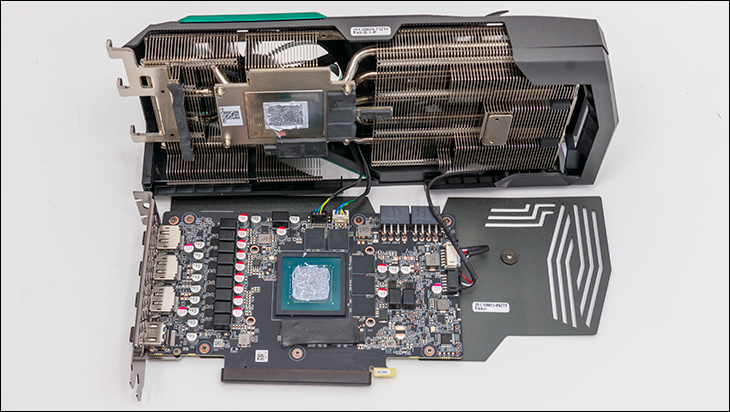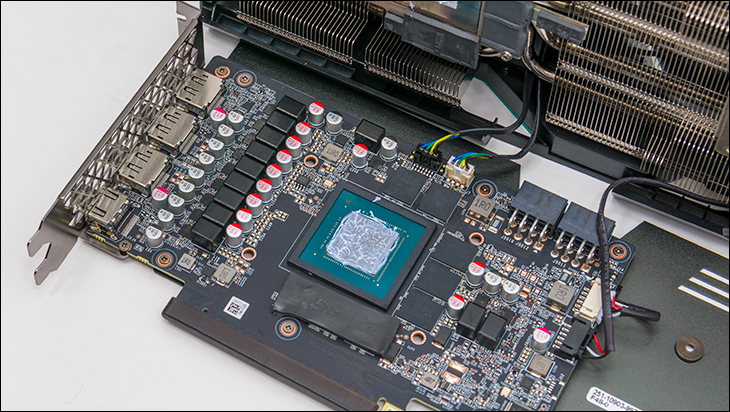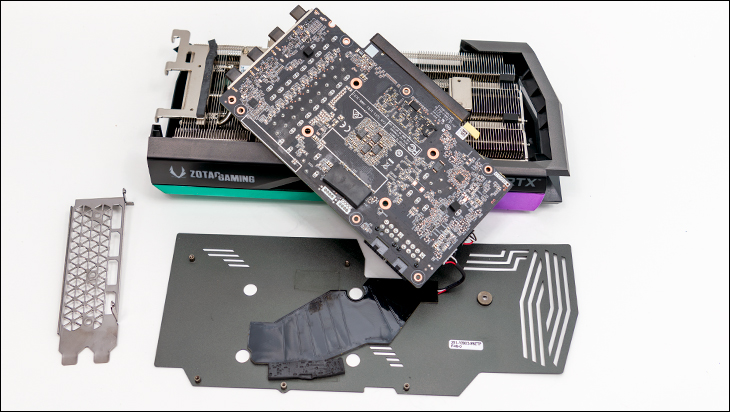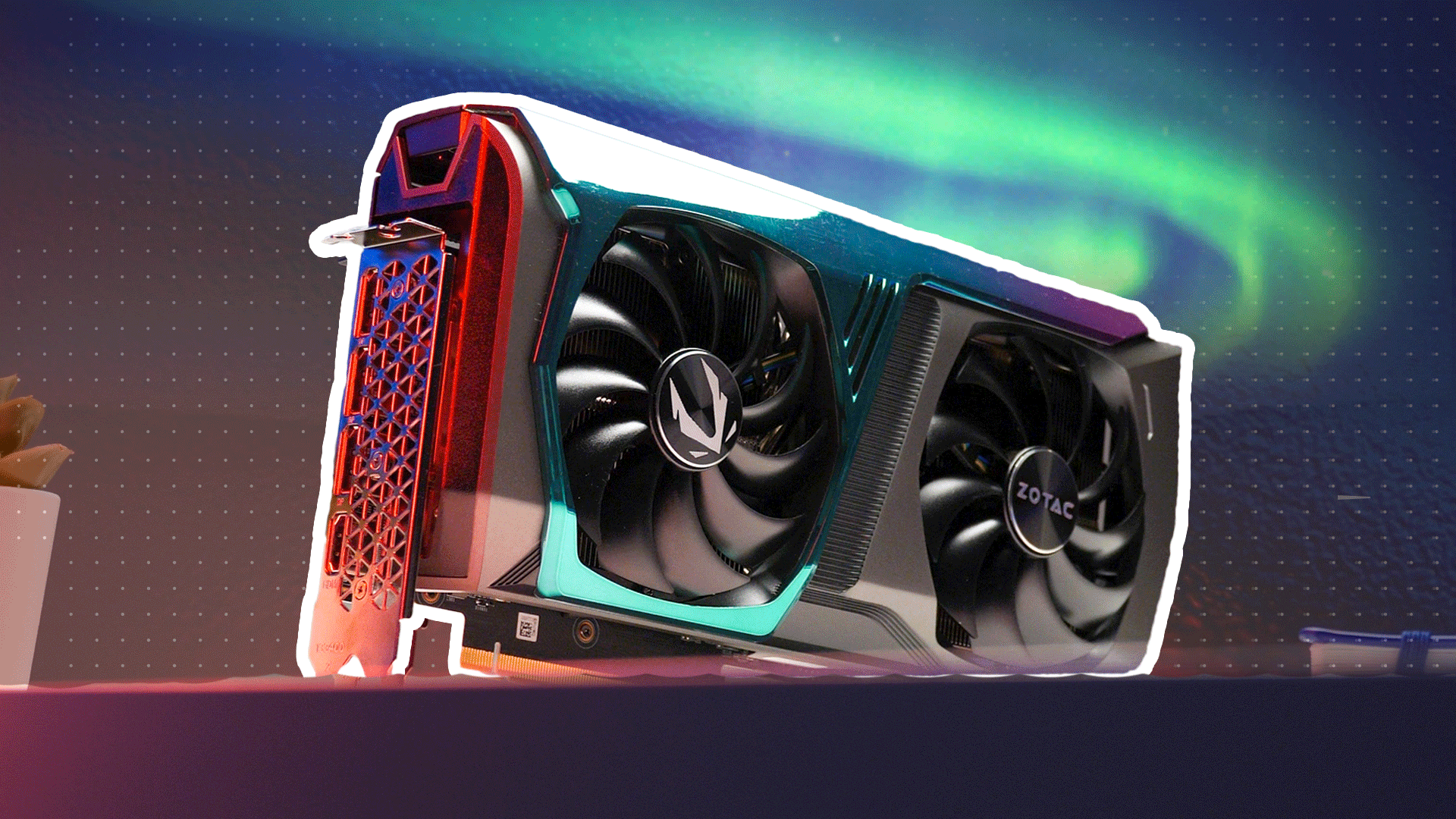
Since we did not have to offer up our first-born child as collateral, we felt free to crack this beast open and take a closer look and the internals. Even on just a quick glance you can see this is not just a pretty face. First and foremost is Zotac has taken previous generation’s criticisms to heart and included a veritable ton of heat pads for basically all the various components on the PCB. We personally felt this was tempest in a teapot as we ran many a Zotac 10-series and even 20-series in a 24/7 mining environment and they outlasted the vast majority of the ‘other guys’. However, peace of mind is priceless. So any concerns over say the RAM or VRM’s dying an early heat related death are now moot. With the 30-series, they all are actively cooled via the IceStorm 2 cooling solution.

The highlights of the internals include Samsung GDDR6 RAM ICs, a 10+2 all digital VRM, and a nice clean layout. All of which is what we have come to expect from good, high(er) end custom RTX 30-seres cards. What is really interesting is the PCB itself. As you can see it is not a custom PCB. While we cannot guarantee it is stock NV… it certainly appears so. We doubt (m)any buyers will want to yank of that gorgeous custom cooling solution and go the water route but it probably would be a painless process.

The downside to using a short PCB with the IceStorm 2 hanging off the end is that a fair bit of waste heat is going to be pushed through the card and up into the CPU cooling zone. This will increase CPU temperatures if you are using air-based cooling solutions, but to be honest it is going to be less than many. Unlike most, especially the “CPU killer” Founder Edition RTX 30-series, variants the backplate does not offer a clear path for this waste heat. Instead, there are a couple cutouts but most of the high velocity air is not going to be pushed right into your CPU heatsinks fan. A bit will, but the Zotac RTX 3070 AMP HoloBlack is actually better than many as most will bounce off the backplate and go sideways… not upwards with extreme prejudice. Nvidia really does have a hate on for air-based CPU cooling solutions and we wish more would consider what Zotac did the bare minimum… and maybe even went back to the solid backplate configurations. This is something you will have to take into consideration before purchasing most RTX 30-series cards, but overall, the HoloBlack is actually above average in its considerateness for CPU air coolers.

Like a Founder’s Edition RTX 3070 the back of the PCB is rather… busy and includes numerous components. This is one issue, common amongst RTX 3070s, Zotac could have gone above and beyond by using a longer custom PCB. They did not, thus good internal case airflow is going to be paramount if you value longevity. To help things along Zotac has used both a reasonable thick alloy backplate and heat pads to turn the entire back of the card into a nice and large heat spreader. This in conjunction with the backplate being in direct path of the waste airflow from the front 100mm fan nicely alleviates this potential issue… it just is an issue that would not have to be overcome if a longer PCB with all the components on the topside had been used. Either way, the Zotac RTX 3070 AMP Holoblack is arguably above average.

Moving on. The included display port options are best described as ‘average’ and their blandness does stand in stark contrast to the rest of the design. After all, this is a three-slot card and yet two slots worth of space are not used. Instead, all four ports are in a row on the slot nearest the PCB. On the positive side, all four ports are full sized versions, the three DisplayPort’s are DP1.4a compliant, and the lone HDMI is a HMDI 2.1 compliant port… none of which will help you if you have a DVI-D monitor, but for modern monitors capable of uber-fast refresh rates this selection of ports will get the job done. In other words this is a bog-standard list of display options that can be found on any RTX 3070.











